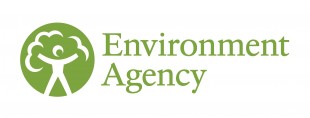
In a new blog, Abolanle Elizabeth Odusanya from the Lincolnshire and Northamptonshire hydrology team explains more about the wonderful world of hydrology; what it consists of and why it is important to the Environment Agency, particularly in the East of England.
Water is the most fundamental natural resource. Without it, we simply cannot survive. Although there is plenty of water on earth, the supply of water available for our use is limited by nature, it is not always in the right place, at the right time, or of the right quality. Globally, water-related hazards have increased in frequency for the past 20 years. Since 2000, flood-related disasters have increased by 134%, and the number and duration of droughts also increased by 29%. The resilience of water supplies and the water environment to climate change and the impacts of drought are areas of concern for the UK. The importance of hydrology is increasing because of the rise of water scarcity, water-related hazards and the global growth of water needs.
But what is hydrology?
Hydrology evolved as a science in response to the need to understand the complex water system of the earth and help solve water problems. It is the study of water and it’s the science that encompasses the occurrence, distribution, movement, and properties of the waters of the earth’s surface, atmosphere, in the soil and the underlying rocks. It is also concerned with the impact of human activities on water quality and with problems in water management. Hydrologists apply scientific knowledge, and mathematical principles to mitigate and solve water-related problems in society.
Water and people: East of England
The East receives only two-thirds of average national rainfall making it the driest region in the UK. The region has increasing needs for water resources year on year where water demand and water availability are constantly in fluctuation and competition. The region is classified as severely water-stressed by the Environment Agency.
East Anglia which incorporates the counties of Norfolk, Suffolk, Cambridgeshire, Bedfordshire and Essex has many places receiving less than 600mm (24") of rainfall a year. This is almost half the UK average of 1,163mm. East Anglia is generally more vulnerable because water supply is scarcer, river flows are lower and it has a much larger arable agricultural area.
Parts of the Lincolnshire and Northamptonshire area are amongst the driest parts of the UK. In this area, water demand is also high with the region having been labelled a “dry region”. In the last few years, we’ve also seen extreme environmental hazards in the area such as floods and drought. The climate emergency is predicted to bring more extremes of weather and short and long-term challenges for water resources. With the population growth and water demand the EA recognises that more investment in water management is needed to manage this risk and to make sure that there are adequate water supplies to support population and commercial growth.
The role of the hydrologist
The local hydrology team provides technical expertise and advice on water resource management, and regulation in the East of England. This includes important issues such as preventing the deterioration of water courses under the water framework directive, catchment abstraction management strategies (CAMS), water company water resource management plans, drought plans and restoring sustainable abstractions and determining water resources licences.
Making sure enough water, but not too much, is in the right place at the right time is also a key part of the hydrologist’s job. Our teams are constantly analysing data to help understand how to best use water now through methods such as augmentation and water transfer schemes. We are also constantly planning for the future including by monitoring rainfall and evaporation data to understand how aquifers refill and planning for long-term water storage.
Making sure that water is sustainable and remains to a high quality and is used sustainably is at the heart of everything we do.
Looking to find out more?
The hydrology team in each area produces monthly water situation reports, which communicate developments in rainfall, river flows, soil moisture deficits, groundwater levels and reservoir stocks.
These reports are publicly available and you can find out more by visiting: Water situation: area monthly reports for England 2024 - GOV.UK
Subscribe to get new blog updates from the Environment Agency delivered to your inbox, or follow us on X

1 comment
Comment by Ana Rasekhi posted on
This article has given me a lot to think about. Thank you